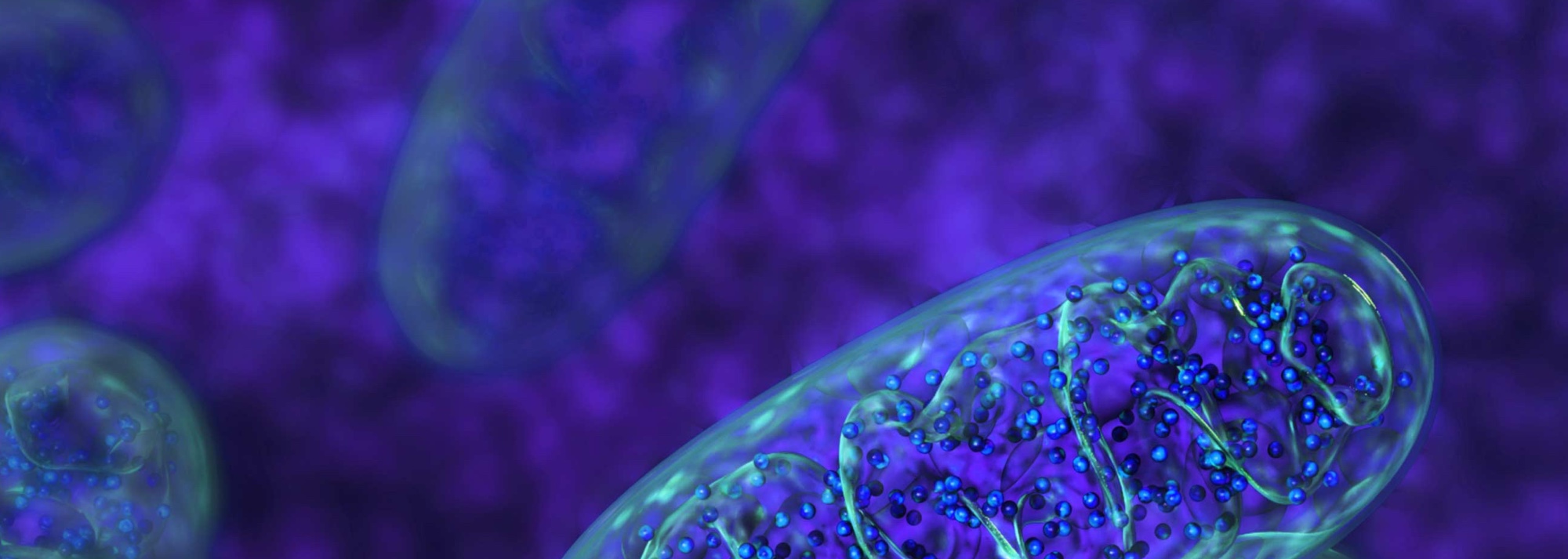Driven by the power
of mitochondria
The energy produced by mitochondria is used in many fundamental signalling and metabolic pathways, impacting most areas of cell biology and health

Mitochondria - much more than a source of energy
Almost every cell in our body contains hundreds of tiny power plants called mitochondria that are responsible for approximately 90% of the energy demands of cells.
Mitochondria are unique organelles: connected in a dynamic network, they use oxygen to convert carbohydrates, free fatty acids and proteins into Adenosine Triphosphate (ATP), a chemical compound that provides energy to almost every chemical reaction in our cells. This energy is used in many fundamental signaling and metabolic pathways (including steroid hormone production, proliferation and cell death decisions, cholesterol metabolism, and the synthesis of key metabolites) impacting most areas of cell biology and health.
These organelles are unique in another aspect: they are the only human organelle that harbors its own genome – termed mitochondrial DNA, or mtDNA. Over the course of evolution, mitochondria have evolved to enable humans to adapt to multiple metabolic requirements. Therefore, over time, the mtDNA of these organelles have amassed single nucleotide polymorphisms, SNPs, some of which enable nuanced differences in bioenergetics and mitochondrial function. These SNPs define different human haplogroups, groups with mitochondrial sequence differences that represent major branch points defined by human migration out of Africa and population of the globe. A subset of these SNPs, these small changes of the mitochondrial genome (adaptive polymorphisms), have enabled us to live and thrive in areas as diverse as the cold Arctic circle to the Saharan desert.
mtDNA is inherited exclusively from the mother: no paternal contribution during fertilization.
Mitochondria are dynamic organelles residing in a network, undergoing fission and fusion processes, moving within the cell and between cells according to the energy requirements. In healthy cells, a strict quality control system assures that damaged mitochondria will be eliminated from the network through a process called Mitophagy, while healthy mitochondria will propagate by mitobiogenesis. In some diseases, and especially in aging, this process is damages, resulting in accumulation of dysfunctional mitochondria, cell and organ failure.

Mitochondrial Dysfunction
The human body requires vast amounts of ATP for healthy function, especially an extremely active organs such as our brain, heart and muscle, as well as cells requiring bursts of high activity, such as immune cells. Mitochondrial dysfunction can affect anyone from birth to late adulthood and can be multi-systemic or organ-specific. Deterioration in mitochondrial functionality can be caused by genetic or environmental causes.
Without healthy mitochondria, cells and organs malfunction leading to devastating multisystemic mitochondrial diseases. Point mutations and deletions in mtDNA are known to occur in certain primary mitochondrial diseases, as well as to accumulate with age, and can have profound effects on brain, muscle, kidney, pancreas, immune system function and more.

mtDNA Heteroplasmy & the Threshold Effect
In diseases involving mutations or deletions of the mtDNA, mutated and wild-type (normal) mtDNA molecules co-exist in the same cell, a state defined as heteroplasmy. Relative level of mutated to wild-type mtDNA is known to correlate with disease severity in that organ.
In addition to heteroplasmy levels, there are multiple other parameters that affect the severity of mitochondrial diseases, including the total mtDNA copy number, mitochondrial haplogroup, age, and mitochondrial quality control.
threshold
Stewart & Chinnery, 2015 Nature Reviews Genetics